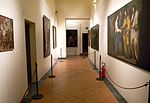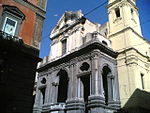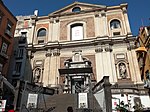Roman Catholic Archdiocese of Naples

The Roman Catholic Archdiocese of Naples (Italian: Arcidiocesi di Napoli; Latin: Archidioecesis Neapolitana) is a Roman Catholic Archdiocese in southern Italy, the see being in Naples. A Christian community was founded there in the 1st century AD and the diocese of Naples was raised to the level of an Archdiocese in the 10th century. Two Archbishops of Naples have been elected Pope, Paul IV and Innocent XII.In 2004 it counted c. 1,600,000 baptized people.The current ordinary of the Archdiocese of Naples is Cardinal Crescenzio Sepe. Lucio Lemmo and Gennaro Acampa are auxiliary bishops.In the foreword to the Summa Theologica, the famous theological summary of the Catholic Church's doctrines, where a biography of the author, Saint Thomas Aquinas, is found, it is mentioned that he was offered the post of Archbishop of Naples (in the 1200s), which even then was one of the most prominent archdioceses, but turned it down.
Excerpt from the Wikipedia article Roman Catholic Archdiocese of Naples (License: CC BY-SA 3.0, Authors, Images).Roman Catholic Archdiocese of Naples
Piazza Sisto Riario Sforza, Naples San Lorenzo
Geographical coordinates (GPS) Address Nearby Places Show on map
Geographical coordinates (GPS)
| Latitude | Longitude |
|---|---|
| N 40.8525 ° | E 14.259444444444 ° |
Address
Cattedrale di Santa Maria Assunta (Duomo)
Piazza Sisto Riario Sforza
80138 Naples, San Lorenzo
Campania, Italy
Open on Google Maps











